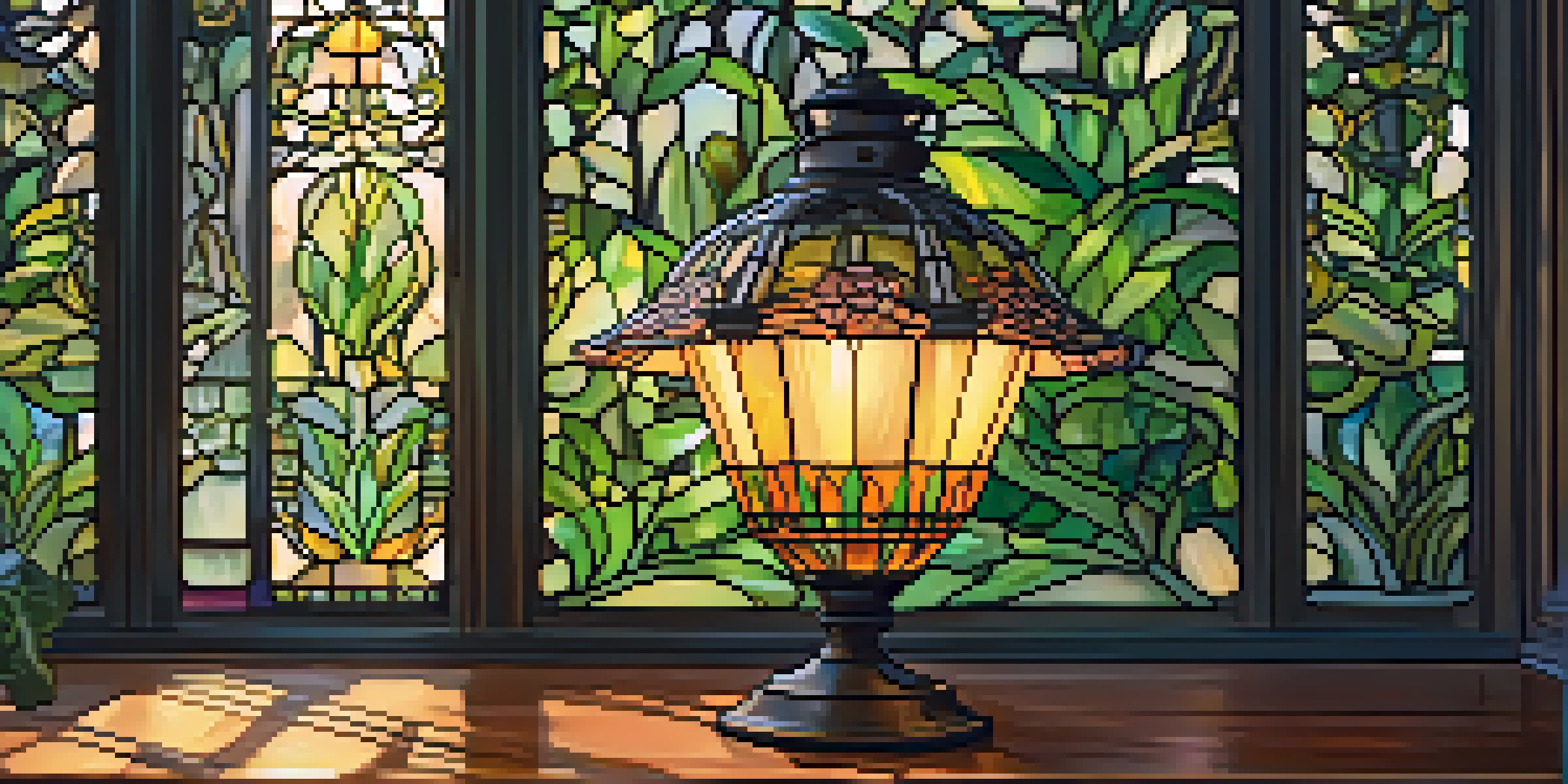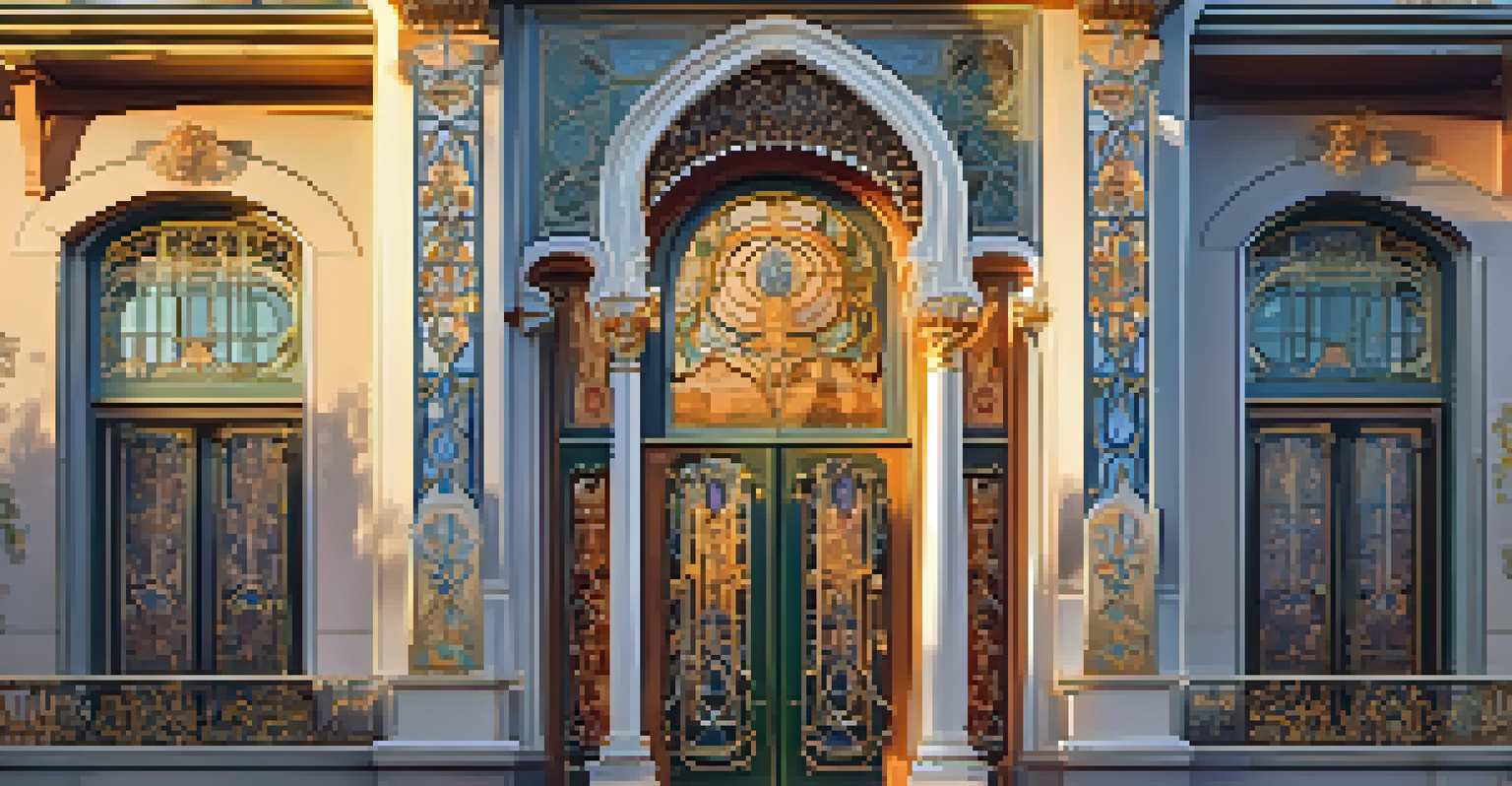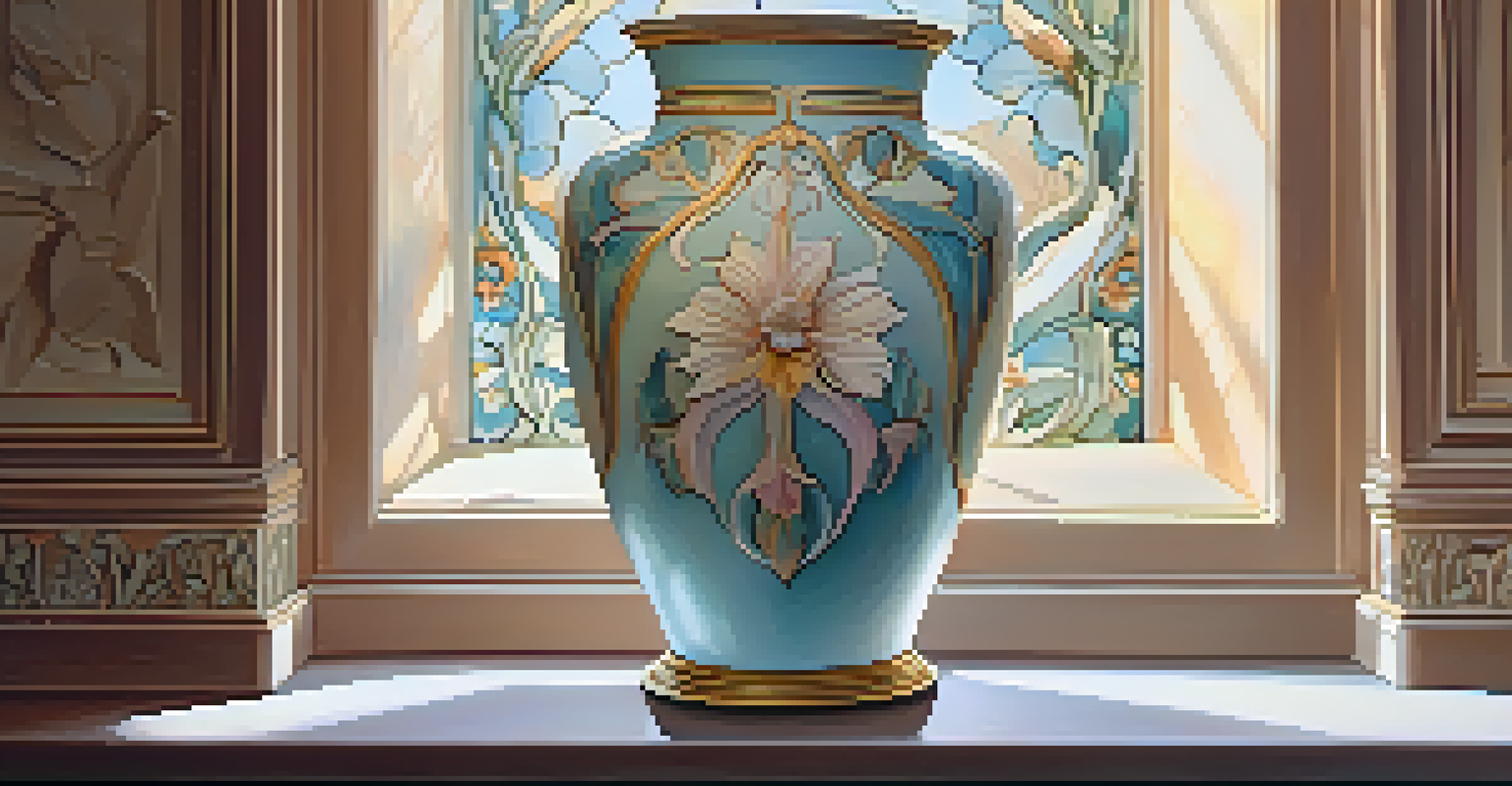Art Nouveau: A Fusion of Art and Nature in the Late 19th Century

The Origins of Art Nouveau: A Response to Industrialization
Art Nouveau emerged in the late 19th century as a reaction against the rapid industrialization and mass production of the time. Artists sought to break free from the rigid structures of previous art movements and create something that resonated with the organic forms found in nature. This movement embraced the idea that art could be more than just a product; it could be a harmonious part of everyday life.
Art is not a thing; it is a way.
This era witnessed a shift towards the decorative arts, where crafts such as furniture, textiles, and ceramics were designed with the same level of importance as painting and sculpture. Artists like Gustav Klimt and Alphonse Mucha became ambassadors of this new aesthetic, blending fine art with functional design. Their work often featured flowing lines and intricate patterns inspired by the natural world, illustrating how beauty could be integrated into daily living.
In essence, Art Nouveau was not just an artistic style but a philosophy that aimed to elevate the mundane into the extraordinary. It sought to inspire a deeper appreciation for craftsmanship and the beauty around us, laying the groundwork for future movements that would continue to explore the relationship between art and nature.
Key Characteristics: Nature as Inspiration
One of the defining features of Art Nouveau is its focus on organic forms and motifs, particularly those inspired by flora and fauna. Artists often incorporated flowing lines, asymmetrical shapes, and intricate details that mirrored the complexity of nature. For instance, the famous 'Tiffany lamps' designed by Louis Comfort Tiffany showcased delicate floral patterns, bringing the essence of the garden indoors.

In addition to plants, other natural elements such as insects and animals frequently appeared in Art Nouveau designs. The use of these motifs helped convey a sense of harmony between humanity and the environment, emphasizing the interconnectedness of all living things. This approach encouraged viewers to appreciate the beauty of nature and its influence on artistic expression.
Art Nouveau: Nature's Artistic Response
Art Nouveau emerged as a reaction to industrialization, emphasizing organic forms and craftsmanship to integrate beauty into everyday life.
Moreover, the emphasis on craftsmanship in Art Nouveau allowed artists to explore new materials and techniques. From stained glass to wrought iron, each creation celebrated the beauty of the natural world while showcasing the skill and creativity of the artisan. This merging of art and nature created a unique aesthetic that remains beloved to this day.
Prominent Artists and Their Contributions
Several key figures played pivotal roles in the development of Art Nouveau, each bringing their unique perspectives and styles to the movement. Alphonse Mucha, for example, is renowned for his iconic posters featuring beautiful women surrounded by intricate floral designs. His work captured the essence of the Art Nouveau movement, blending elegance with a deep appreciation for nature.
The details are not the details. They make the design.
Another significant contributor was Antoni Gaudí, whose architectural masterpieces in Barcelona, like the Sagrada Familia, showcase the organic forms and flowing lines characteristic of Art Nouveau. Gaudí's work is a testament to how architecture can harmoniously coexist with nature, often incorporating natural light and local materials to create structures that feel alive.
Additionally, artists like Gustav Klimt delved into the emotional and spiritual aspects of nature in their works. Klimt's use of gold leaf and intricate patterns in paintings like 'The Kiss' reflects the opulence and beauty of the natural world, intertwining it with human experience. These artists collectively enriched the Art Nouveau movement, leaving a lasting legacy that continues to inspire.
Art Nouveau in Architecture: A New Aesthetic
Art Nouveau significantly influenced architecture, leading to the design of buildings that embraced organic forms and flowing lines. Architects like Victor Horta in Belgium and Hector Guimard in France pioneered this style, creating structures that seemed to grow from the ground, much like a living organism. Their buildings featured elaborate ironwork, curved facades, and intricate tile work, which became hallmarks of the movement.
One of the most iconic examples is the Paris Métro entrances designed by Guimard, which are adorned with beautiful, nature-inspired motifs. These entrances not only serve a functional purpose but also stand as artistic statements that invite passengers into the world of Art Nouveau. The seamless integration of art and architecture in such designs reflects the movement's overarching philosophy.
Influential Artists Shaping Aesthetic
Prominent figures like Alphonse Mucha and Antoni Gaudí contributed significantly to Art Nouveau, blending fine art with functional design.
By merging artistic vision with architectural innovation, Art Nouveau created spaces that were both functional and aesthetically pleasing. This approach encouraged a new understanding of how art could influence the environments we inhabit, highlighting the importance of beauty in the built world.
The Role of Decorative Arts in Art Nouveau
The decorative arts played a crucial role in the Art Nouveau movement, as artists sought to elevate everyday objects into works of art. This included everything from ceramics and glassware to furniture and textiles, all designed with an emphasis on craftsmanship and beauty. Artists believed that even the most mundane items could be transformed through thoughtful design, making beauty accessible to everyone.
One notable example is the work of the famous French ceramist Émile Gallé, who created exquisite glass pieces featuring floral and natural motifs. His work exemplifies how the decorative arts embraced the principles of Art Nouveau, blending functionality with artistic expression. Each piece tells a story, inviting viewers to appreciate the intricate details and the natural inspirations behind them.
Moreover, the rise of exhibitions and fairs during this period allowed artists to showcase their decorative arts on a larger scale. This visibility helped to popularize Art Nouveau worldwide, as people began to see the potential for art to enhance their daily lives. The movement's focus on decorative arts ultimately contributed to a shift in how society valued craftsmanship and design.
Challenges and Decline of Art Nouveau
Despite its initial popularity, Art Nouveau faced several challenges that led to its decline in the early 20th century. The movement's intricate designs and elaborate details were often at odds with the rising trends of modernism, which favored simplicity and functionality. As society shifted towards the machine age, the demand for mass-produced items increased, leaving little room for the artisanal focus of Art Nouveau.
Additionally, the onset of World War I marked a turning point for many artistic movements, including Art Nouveau. The war brought about significant changes in society, and the need for practicality became paramount. Artists began to explore new styles that aligned more closely with contemporary values, moving away from the ornate aesthetics of the past.
Legacy and Influence in Modern Art
Despite its decline, Art Nouveau's principles continue to inspire contemporary art and design, highlighting the enduring connection between nature and creativity.
Nonetheless, the legacy of Art Nouveau lives on, influencing future movements like Art Deco and even modern design. While it may have faded as a dominant style, its emphasis on beauty, craftsmanship, and the connection to nature continues to resonate in art and design today.
The Lasting Influence of Art Nouveau Today
Art Nouveau's impact is still evident in contemporary art and design, where its principles continue to inspire new generations of artists. Elements of the movement can be seen in various forms, from graphic design to fashion, highlighting the enduring appeal of nature-inspired aesthetics. The organic shapes and flowing lines that defined Art Nouveau are often reinterpreted in modern works, creating a bridge between past and present.
Moreover, the movement's emphasis on craftsmanship and the individual artist's touch has gained renewed appreciation in today's world, where mass production often dominates. Many contemporary artisans prioritize handmade techniques and sustainable practices, echoing the values that Art Nouveau championed over a century ago. This resurgence reflects a longing for authenticity and a deeper connection to the creative process.

As museums and galleries continue to celebrate the achievements of Art Nouveau, its influence remains a vital part of the conversation surrounding art and design. The movement serves as a reminder of the beauty that can be found in nature and the importance of integrating it into our lives, ensuring that the legacy of Art Nouveau continues to thrive in the modern age.